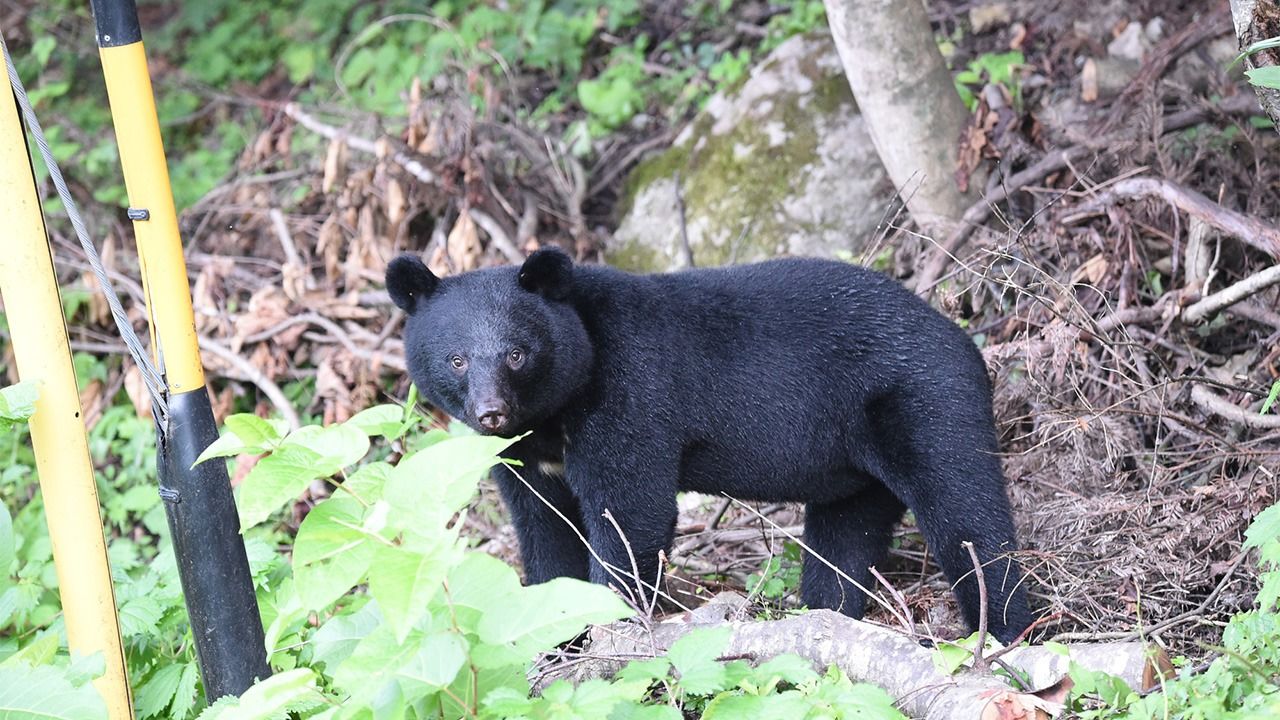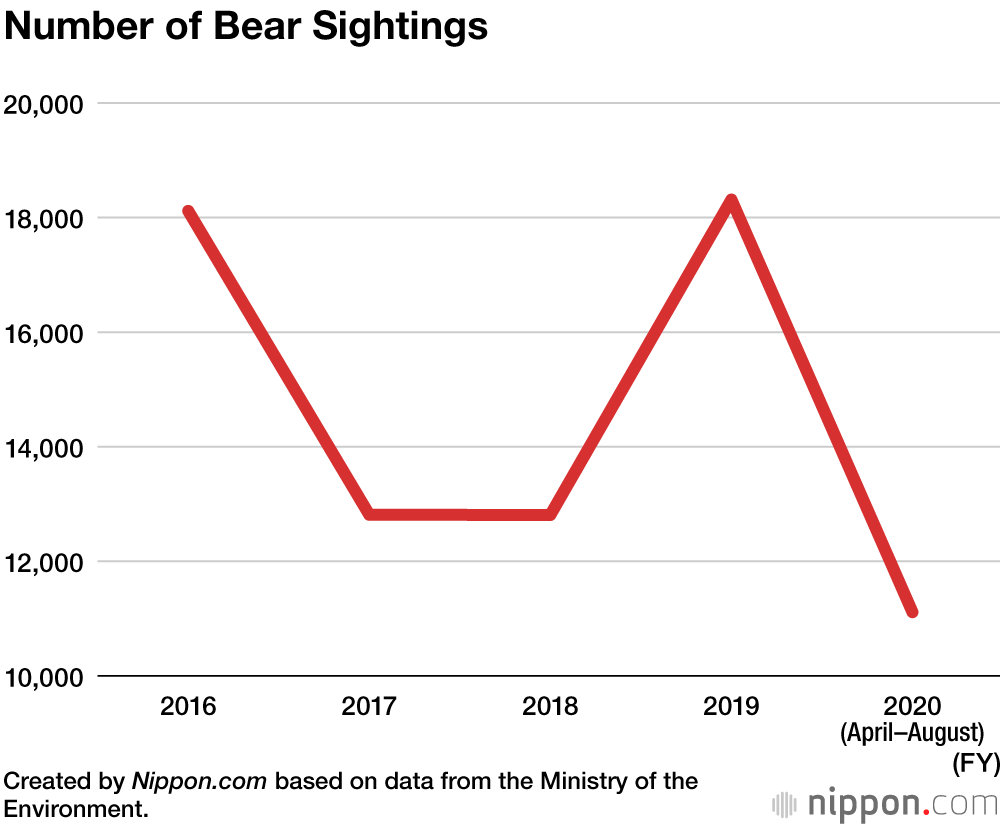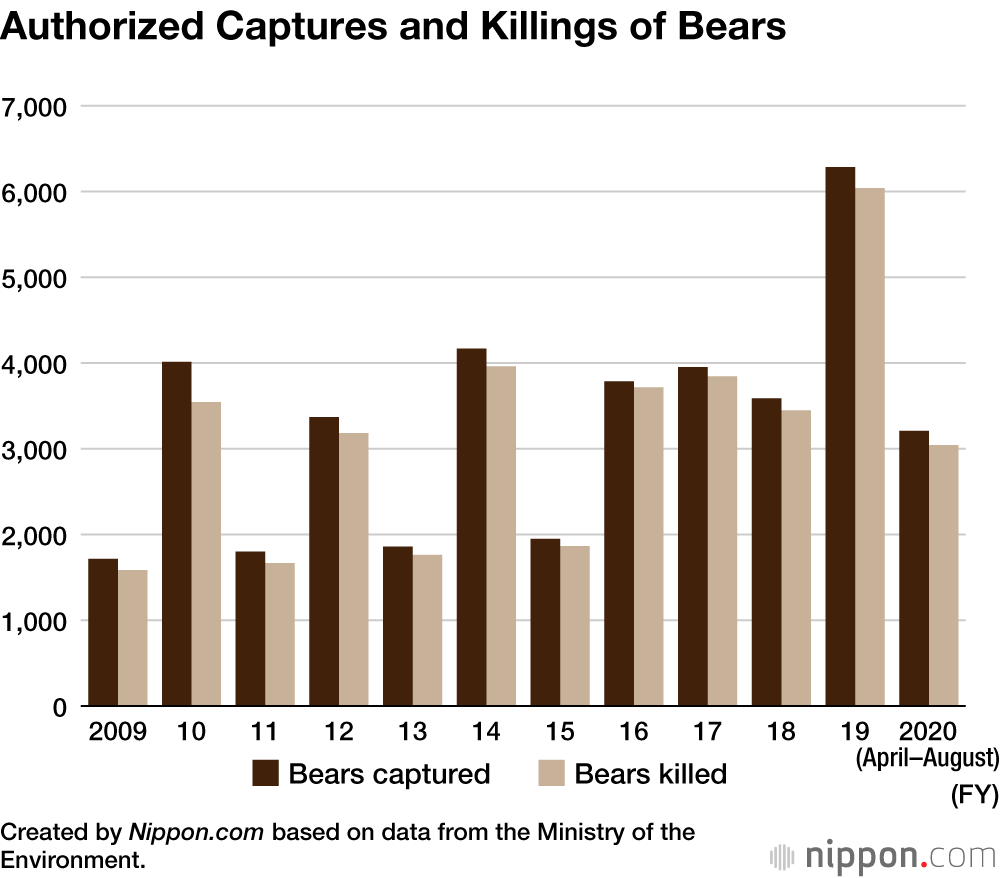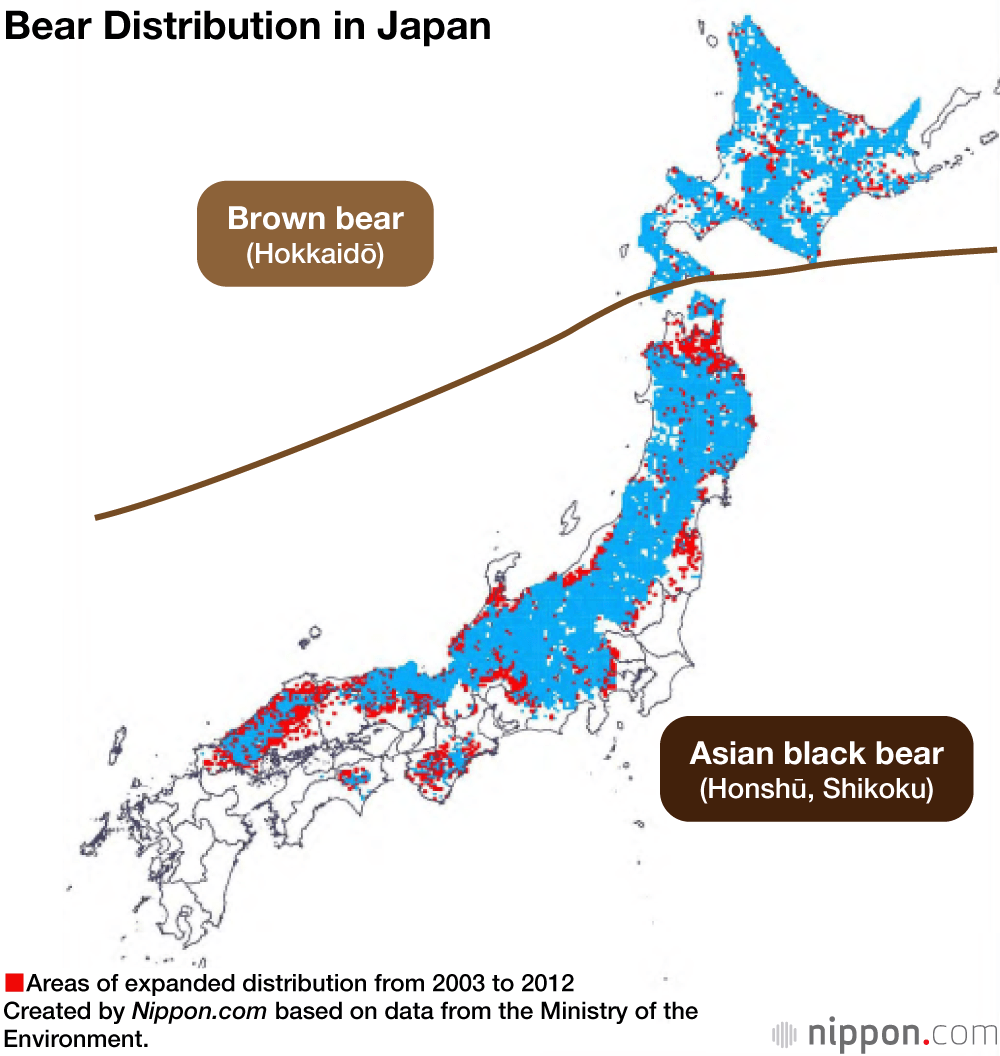
Bear Sightings on the Rise in Japan
Society- English
- 日本語
- 简体字
- 繁體字
- Français
- Español
- العربية
- Русский
Ministry of the Environment figures show that there were 18,300 bear sightings in Japan in fiscal 2019 (April 2019 to March 2020), excluding Hokkaidō, a more than 40% increase compared to the 12,800 sightings in fiscal 2018. In the five months of fiscal 2020 (April to August), there have already been 11,100 sightings.
The number of bears caught in fiscal 2019 (licensed captures authorized by prefectural governor or other authority), was 6,300, a 75.2% increase over the 3,600 bears caught in fiscal 2018. A relatively large number of bears have been captured so far in fiscal 2020 as well, numbering 3,200 as of August 31.
The number of bear attacks on humans is also on the rise. A preliminary statistical report from the Ministry of the Environment on injuries sustained from bear attacks shows that there were 140 bear attacks nationwide in fiscal 2019, a nearly threefold increase over the 51 attacks in fiscal 2018. In fiscal 2020, there have been 56 attacks for the period from April to August, including a spate of attacks in Hokkaidō and the Chūbu region in central Honshū.
Recently, there have been a number of bear attacks on residential areas in Niigata Prefecture, and a woman in her seventies in the village of Sekikawa died from heavy bleeding on October 1. On October 7, an 83-year-old female resident of the town of Fujisato, Akita Prefecture, was attacked by a bear in a residential area and died a week later from a brain contusion.
A total of eight people were injured in the cities of Kaga and Hakusan in Ishikawa Prefecture from October 16 to 18, and on October 19 a bear broke into a shopping center in Kaga, resulting in the facility’s temporary closure.
In a typical year, the largest number of bear sightings are from around April, when bears awaken from hibernation, until just prior to their next hibernation in late autumn, around November. The reason for bears coming down from their normal mountain habitat to intrude on human settlements seems to be the lack of food sources such as acorns, due to increased typhoon damage. The Ministry of the Environment is calling on people living near areas with many bears to take precautionary measures by removing things that might attract bears, such as abandoned fruit trees, waste farm produce, and garbage, while also installing electric fences on farmland.
(Translated from Japanese. Banner photo: A wild bear. © hiro/Pixta.)


